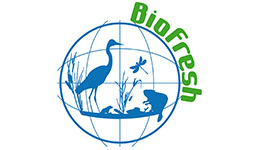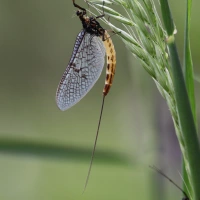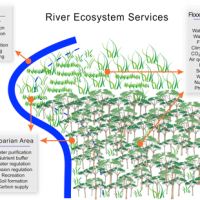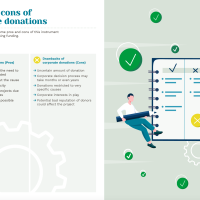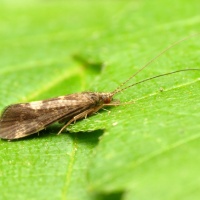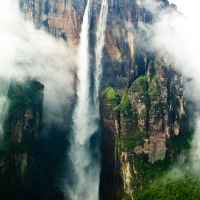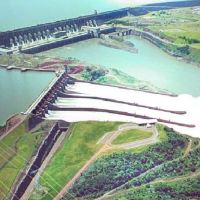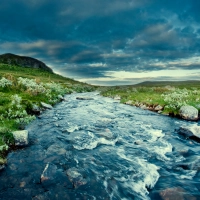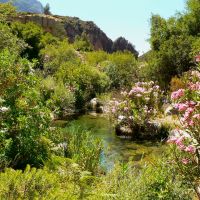CROSSFISH: human impacts on fish assemblages in European and North American rivers

River Piave, Belluno, Italy. Image: Rafaela Schinegger
Earlier in the year, MARS scientist Dr. Rafaela Schinegger from the University of Natural Resources and Life Sciences, Vienna (BOKU) travelled to the United States to begin a collaboration with the Aquatic Landscape Ecology (ALE) Laboratory led by Dr. Dana Infante and others from the Center for Systems Integration and Sustainability, Department of Fisheries and Wildlife at Michigan State University (MSU).
Funded by a Fulbright Austria research scholarship, Rafaela has been working on a collaboration named CROSSFISH, which focuses on the influence of human stressors on river fish assemblages in Europe and the United States. Here, Rafaela tells us more about her research and this transatlantic collaboration.
***
River ecosystems around the world are vulnerable to various stressors (also referred to as pressures) caused by human activities. These include agricultural production, urbanisation, hydropower generation and commercial water use amongst many others.
Such activities don’t only affect water quality and quantity, but also impact the ecological integrity and health of rivers, and the ecosystem services they can provide. Fish have complex ecological requirements and are generally highly sensitive to habitat degradation. This means that stresses on river ecosystems are likely to particularly impact fish assemblages. The term ‘assemblage’ describes populations of two or more different species occupying the same geographical area at a particular time
European waters: assessment of ecological status and pressures
There is strong European Union environmental legislation designed to help improve and protect the continent’s river ecosystems. In particular, the European Commission’s Water Framework Directive (WFD) requires member states to ensure that all water bodies to reach ‘good ecological status / potential’. The WFD is implemented in 6-year planning phases (with the most recent phase ending this year) and relies on the use of multiple Biological Quality Elements (BQEs) for status assessments. As outlined above, fishes are sensitive indicators of water quality and ecological integrity in rivers, which makes them an excellent indicator species for assessment.
56% of European rivers fail to achieve good ecological status or potential, as they are affected by a complex set of human-driven stressors, according to WFD River Basin Management Plans and a related 2012 report by the European Environment Agency. While working on projects that focused on understanding multiple human stressors on rivers and their impacts on freshwater fish assemblages, I have gained expertise on these topics over the last few years and in my work as senior scientist and lecturer at BOKU (see here and here), and have focused on related aquatic ecosystem management responses.
For example, working with scientists from 15 countries in the EU funded project EFI+ Improvement and Spatial Extension of the European Fish Index, we identified and collected stressor data for fish at sampling sites across Europe.
Based on these data, we showed that:
(1) degradation of European rivers is widespread;
(2) single water quality pressures were not dominant, but;
(3) many European rivers are affected by hydromorphological pressures or a combination of pressure types;
(4) and that stressor and stressor combinations vary across ecoregions and river types.

Large rivers (>1000km2 catchment size) in Europe.

Large rivers (>1000km2 catchment size) in the USA.
National Assessment of the Status of Fish Habitats in the United States
Just as in Europe, human-induced stressors on fish assemblages in rivers are widespread in the United States and have caused predictable declines in the condition of fish habitat and led to changes in fish biodiversity. Fish community indicators of habitat condition have been identified for the entire U.S. and are used in a national river fish habitat condition assessment for the National Fish Habitat Partnership (NFHP).
The NFHP’s mission is to protect, restore and enhance the USA’s fish and aquatic communities through partnerships that foster habitat conservation. NFHP works nationwide, leveraging federal, state and private funding sources and expertise to ensure productive and sustainable fish populations through conservation projects. This is currently implemented through 18 regional grassroots partner organisations.
In 2010, Dr. Dana Infante’s Aquatic Landscape Ecology lab completed a condition assessment of the nation’s rivers for the NFHP. Researchers at the lab are now working on an updated assessment for 2015 to describe current river conditions and the changes that have occurred in the last five years. Dr. Infante is an Associate Professor at Michigan State University and her research expertise includes studying landscape factors that influence physical and biological features of river systems, river catchment hydrology and ecological assessment.

US National Fish Habitat Assessment map showing best (blue) to poorest (red) ecological condition.

Multiple Human Pressures and Their Spatial Patterns in European Running Waters. Click the image to explore the map on the Global Freshwater Biodiversity Atlas.
Cross-continental collaboration through CROSSFISH
My work shares similarities with Dr. Infante’s, focusing on similar freshwater topics at a range of spatial extents across the world. As a result, we began working together on the CROSSFISH cross-continental collaboration in 2015 during my Fulbright scholarship.
With CROSSFISH, we want to highlight similarities and differences in the status of fish habitats and assemblages in Europe and the United States, and the threats they face. Our work examines data quality as well as the forces and policies that impact the ecology of river ecosystems and their fish assemblages.
The first step now is to describe regional and continental differences of large-scale stressor patterns based on existing data and try to characterise current ecological conditions of fish assemblages and habitats in a common way for both continents. This research uses landscape variables (e.g. land-use, road density) as surrogates for human stressor data.

Land-use in Europe. Corine Land Cover types, 2006
Using a common research format, uncertainties in existing datasets will be identified and stressor patterns guided by mechanistic principles will be described. We aim to gain insights on both future data needs and ways to improve aquatic ecosystem management on both continents. In this regard, the elements of the USA’s National Fish Habitat Action Plan (pdf), (an outcome of the NFHP assessments) can serve as a best-practice example, with implementation potential in Europe and elsewhere.
This Action Plan sets an ambitious agenda for the National Fish Habitat Partnership, planning for the first-ever national assessment of fish habitats in the USA, and the development and support of voluntary regional Fish Habitat Partnerships with high standards of science-based conservation.

Rafaela Schinegger (left) and Dana Infante (right).
Can CROSSFISH contribute to future global inland fisheries assessment?
At Michigan State Universities’ Center for Systems Integration and Sustainability in the Department of Fisheries and Wildlife, Professor William W. Taylor and his group are looking at how fish habitat and fish production are directly linked to human systems, both locally and globally. From the Great Lakes to the Nile River, their studies involve global change issues such as climate, evaluation of governance, policies on the impact of fish community dynamics and their sustainability on food security and ecosystem integrity.
MSU and the Food and Agriculture Organization of the United Nations (FAO) established close cooperation on global inland fisheries in early 2015, with the aims of elevating the global profile of inland fisheries and aquaculture in respect to: (1) food and economic security; and (2) sustainable land development and water management.
The CROSSFISH approach may prove highly relevant for such assessments as the actual data on global inland capture fisheries production are generally incomplete and inaccurate and do not include interactions with associated fish habitat conditions. To facilitate these global discussions, an abstract on CROSSFISH has been submitted for the 7th World Fisheries Congress, taking place from 23rd to 27th of May 2016 in Busan, Korea.
We want to encourage scientists and policy makers to attend this event, especially session 6 – Moving Toward a Global Status of Inland Fisheries: First Steps – hosted by U.S. Geological Survey, Carlton University (Canada) and MSU. This will enable parties interested in CROSSFISH and related large-scale assessments of river fish assemblages to share interests and discuss potential future solutions that may enhance the sustainability and value of the world’s river ecosystems.
***
Below are two slideshows of Rafaela’s photographs taken in the field across Europe and the U.S.A.
Who says scientists aren’t creative!
Find out more about Rafaela’s research here.



